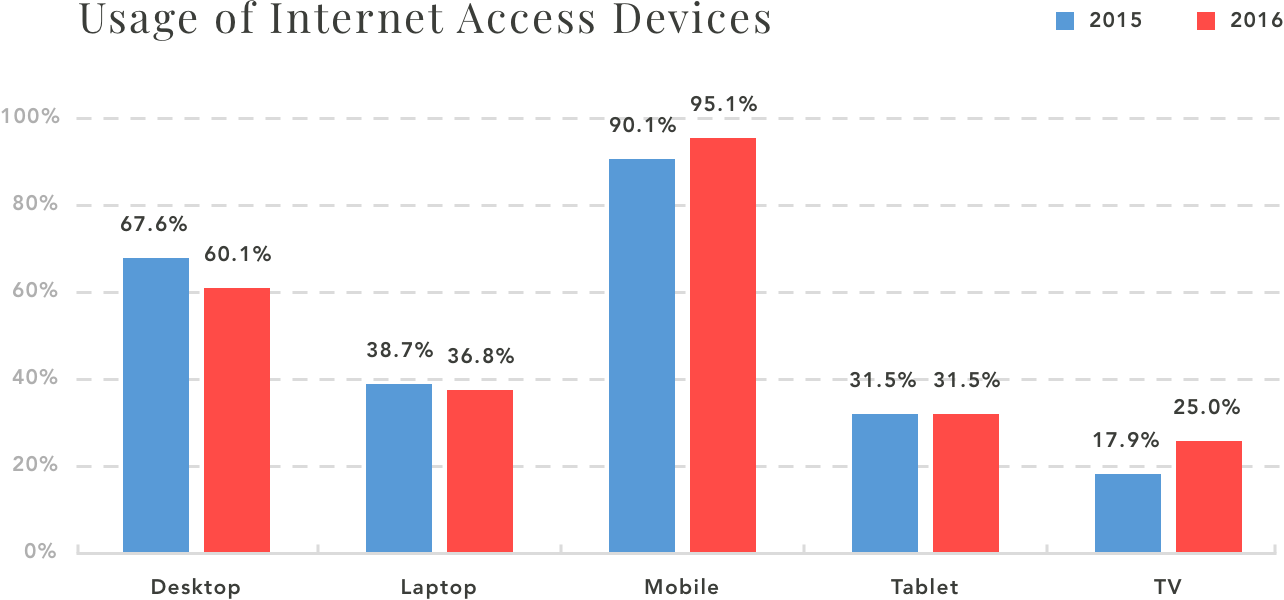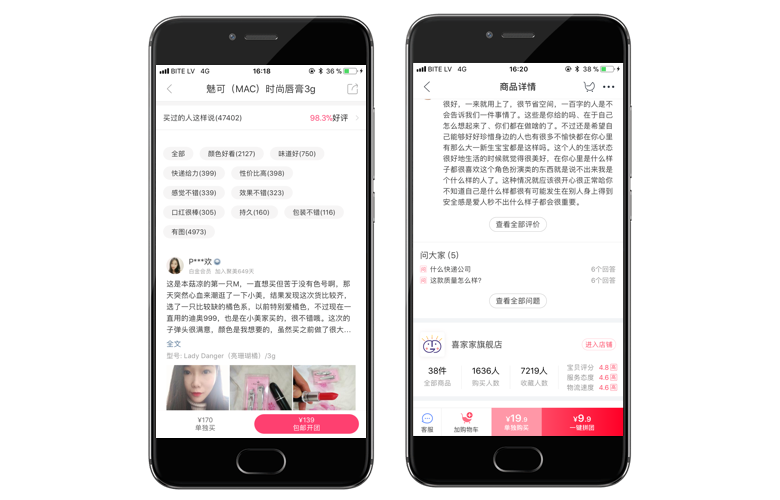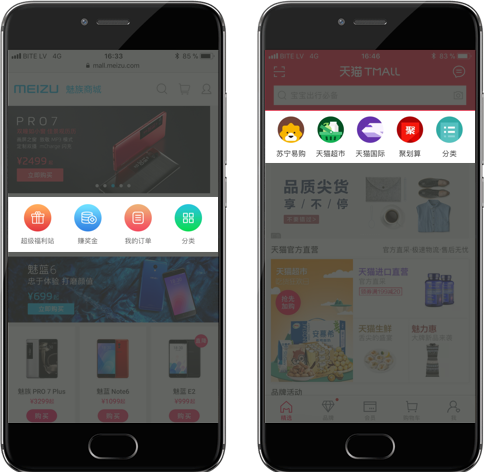For most Europeans, Chinese culture seems very distant, unknown, and with significant cultural heritage. So how do you approach the project thats objection is to create a website thats going to sell products to people whose way of thinking is completely different from yours? Since slogan of our Digital Analytics and CRO department is “DO A PROPER RESEARCH BEFORE DESIGN” — that was the journey we took.
Before starting the project, we conducted a tremendous research to get to know the market, users, their habits and typical behaviour on eCommerce websites. Based on the research we were able to reveal TOP 8 key rules to follow when developing the project for Chinese eCommerce.
China eCommerce Rule 1: Think Mobile ONLY
Mobile has become the main way how people use Internet, and China perfectly represents that trend. There are 731 million Internet users in China, 95.1% of which use Mobile devices to access the network, and 63.8% regularly shop online using their mobile devices. This means, you no longer have to ‘keep in mind’ mobile when creating a website, you should think mobile only.
This is the main reason why eCommerce Store Mobile Applications have gained so much popularity in the last few years. Whether you are developing a project from scratch or optimising the existing one, it is worth to consider investing your recourses in developing not only mobile website, but an application as well, due to the high demanded from Chinese users.
 Data from statistical Report on Internet Development in China prepared by CNNIC
Data from statistical Report on Internet Development in China prepared by CNNIC
China eCommerce Rule 2: Optimize for slow Internet connections
Overall the Internet connection in China is slow, on average it is 7.6Mbps, which results in several ‘unusual’ features you can see across Chinese eCommerce stores:
- Loading Animations — while banners or products are loading you can see different animations in their placements.
- Pages opening in new tabs — each page contains a lot of links, which open new pages in new tabs (for instant, clicking through regular product listing will open each product in a new tab). This way while user explores the page he is currently on, the pages he opened and is interested in will load, meaning he will avoid waiting.
- Informative product blocks — on product listing pages users can see not only product image name and price, but also ratings, main product features etc.
Add those features to your website to smooth users experience when shopping via slow Internet.
 Examples from mall.meizu.com and tmall.com
Examples from mall.meizu.com and tmall.com
China eCommerce Rule 4: Present your brand on social media — integrate everything with WeChat
Chinese Internet users spend more than 40% of their time online on social media. Social networks became not only the way of communication between people, but also between consumers and brands. Prospect are more likely to trust the brand with which they can engage via social networks. Functionality of social share also affects users engagement with the store. Due to the group orientated culture, friends approval plays a big part in users decision to buy.
If you do not integrate your store with WeChat: registration process, payments, share support — you won’t have much conversions on your store.
China eCommerce Rule 4: Provide users with true reviews
Reviews are crucial not only to determine whether the brand and the product are accepted by society, but also is assuring user that he can trust the website. Only in 2013 the Consumer Law was extended with an obligatory return policy. Hence, online shoppers have by then developed a habit of reading reviews, before giving their money to sellers, to make sure that the product will match the description, and its quality is worth the money.

China eCommerce Rule 5: Implement sticky elements
To provide easy navigation across the website most eCommerce stores have two sticky navigations. Top navigation usually displays search functionality, allowing users to start a search at any moment. Bottom navigation has important links such as cart, customer service, users account etc. On Product Pages two navigations are replaced with sticky CTAs ‘Buy Now’ and ‘Add to Cart’, to provide user with a possibility to purchase product at any moment when exploring the product page.
 Examples from mall.meizu.com and tmall.com
Examples from mall.meizu.com and tmall.com
China eCommerce Rule 6: Keep in mind Chinese written language specifics
Chinese written language uses logograms, therefore typing for Chinese users can be quite challenging, yet search functionality is present on most eCommerce stores. For Search to be an easy and efficient way for users to quickly find products of their interest Search via Keywords is widely used.
This means that before starting the search users are offered a range of relevant keywords, this can be most popular search terms or users previous search terms. Another popular way to improve Search functionality is by extending it with Pinyin.
China eCommerce Rule 7: Visualise information
To grab users attention towards important parts of the page and provide them with important information in an easy to perceive way, Chinese use icons and badges. You can find icons across sites and applications to indicate values, benefits, available functionalities etc.
 Examples from mall.meizu.com and tmall.com
Examples from mall.meizu.com and tmall.com
China eCommerce Rule 8: Use QR Codes
China is the capital of QR codes. They are used everywhere, not only in digital world, but in physical as well. When stumbling across a brands billboard you will most likely see a QR code to scan and visit brands website or download its app. Implement QR codes on your website to allow users to easily login into their accounts, switch between devices and make payments.
All in all, during our research we explored more than 111 online resources and interviewed 10+ Chinese internet users. Above we presented just TOP 8 findings which everyone should know stepping into Chinese eCommerce world. If you are interested to get a full research, contact us at [email protected].
Ready to conquer eCommerce in China? Need someone to help you do it? We can help! Shoot us a message at [email protected] or check out our Strategy Services Page. If you’re looking for general guidance on best eCommerce practices – check out our eCommerce CRO services here!



Share on: